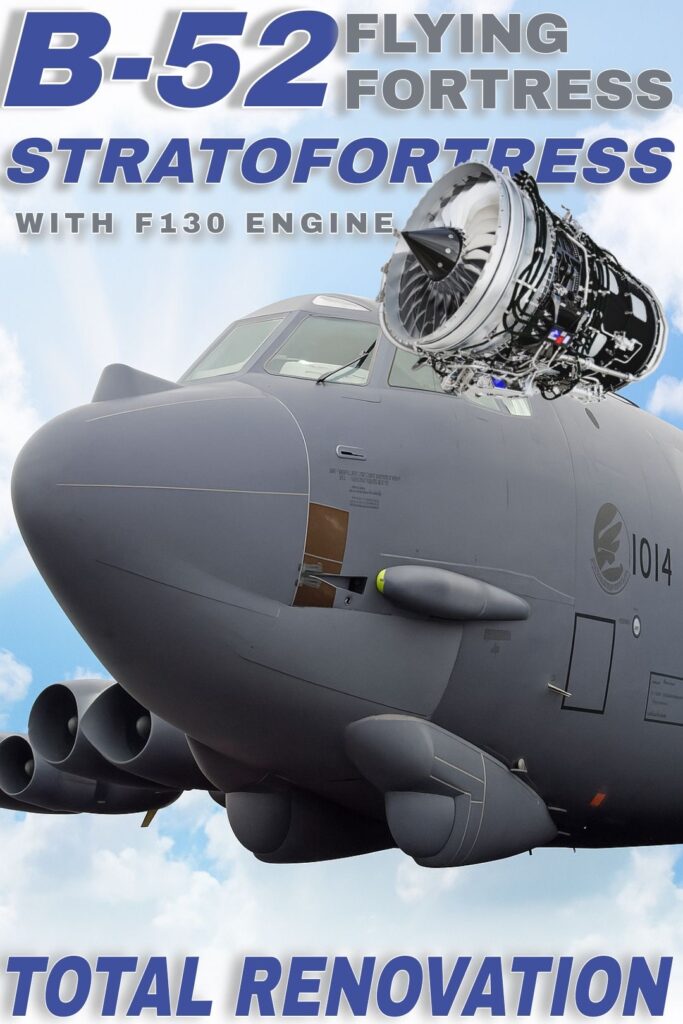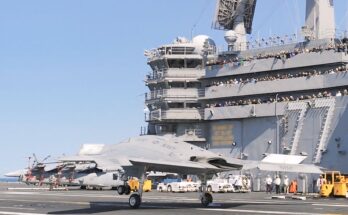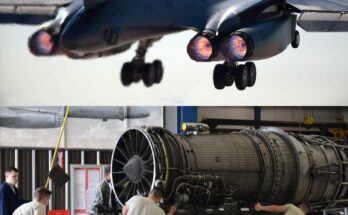
The image depicts an advertisement or informational poster centered on the iconic Boeing B-52 Stratofortress, a long-range, subsonic strategic bomber that has served as a backbone of the United States Air Force since the 1950s. The poster likely highlights the aircraft’s ongoing modernization efforts, described here as a “Total Renovation,” a phrase that captures both the scale and ambition of the Air Force’s plan to keep the B-52 operational well into the 2050s.
In the image, the aircraft may be shown in a hangar or maintenance bay, surrounded by technicians, engineers, and equipment. The fuselage, tail section, or massive wings could be partially disassembled, revealing internal components that are being inspected or replaced. This setting communicates a sense of precision and care, emphasizing that even after seven decades in service, the B-52 remains a valuable and capable platform worthy of investment and renewal.
The term “Total Renovation” reflects more than routine maintenance—it refers to a comprehensive overhaul program intended to bring the B-52H fleet up to modern standards. This includes fitting the aircraft with new Rolls-Royce F130 engines, which replace the aging Pratt & Whitney TF33s. The new engines promise greater fuel efficiency, improved reliability, and reduced maintenance costs. The upgrade extends the bomber’s range and operational readiness, ensuring it remains a potent part of the U.S. strategic deterrent.
The modernization effort also covers avionics, radar, and weapons systems. The cockpit is being updated with advanced digital displays, improved navigation systems, and upgraded communication suites that integrate seamlessly with modern command-and-control networks. The radar system, a critical component for navigation and targeting, is being replaced with the AN/APG-79 radar, similar to those used on advanced fighter aircraft. This enhancement gives the B-52 greater situational awareness and precision in all-weather operations.
Weapons integration is another key part of the “renovation.” The B-52 has always been a versatile platform, capable of carrying both nuclear and conventional munitions. With the upgrade program, it will be able to employ a wider range of modern precision-guided weapons, including hypersonic missiles currently under development. This ensures that the bomber remains relevant in the face of evolving threats and advanced enemy defenses.
Visually, the poster likely communicates pride and longevity—perhaps including slogans such as “Renewing a Legend” or “Built to Last.” It might juxtapose archival photos of the original B-52 with sleek renderings of the upgraded model, underscoring the aircraft’s transformation from Cold War relic to 21st-century powerhouse. The imagery could appeal to both technical audiences and the general public, symbolizing continuity, innovation, and national strength.
For the U.S. Air Force, the B-52 renovation program is more than an engineering project—it’s a statement of enduring capability. Few military aircraft in history have demonstrated such longevity or adaptability. The “Total Renovation” ensures that the Stratofortress will continue to serve as a vital element of America’s strategic arsenal for decades to come, bridging the gap between generations of airpower with both heritage and modern precision.


